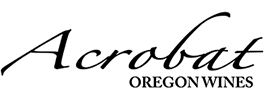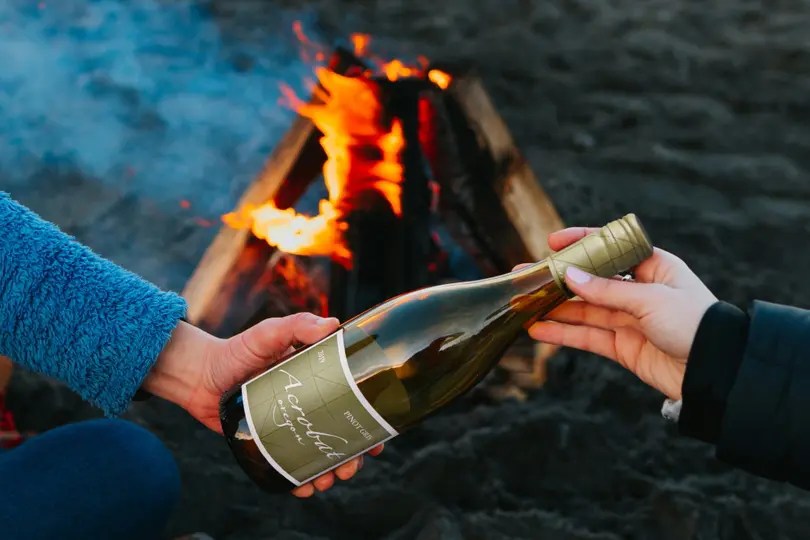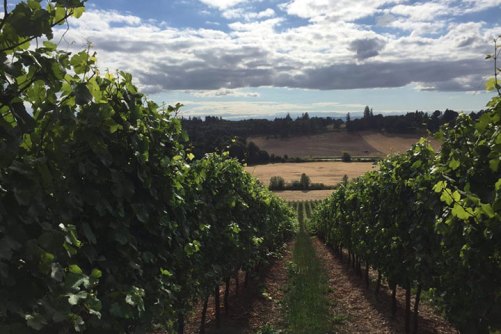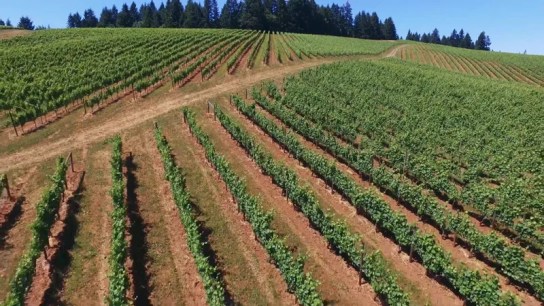Celebrating a good day outdoors requires just a few key ingredients: friends or family, a scenic spot to gather, and a just-right wine to toast the adventure. What makes a wine just right for the occasion? An approach that prioritizes balance, terrain, flavor profile, value, and an unfussy connection to the way moments like these make people happy. That’s the formula Acrobat follows in making wine from western Oregon’s diverse vineyards. Tim Jones, Acrobat’s winemaker, was born in Oregon and says he loves the challenge—and reward—of making wines from the state’s varied terrain. Here’s what he has to say about making wine that pairs with everyday outdoor adventure.
Tim Jones: Acrobat wines are known for being crisp, refreshing, and versatile. This makes them perfect for pairing with friends around a campfire or with a wide range of foods, whether you’re enjoying a casual picnic or a more elaborate outdoor meal. These wines are designed to be approachable and easy drinking. Acrobat wines come from vineyards that emphasize sustainable farming practices—obviously a big plus for everyone who loves nature. They offer excellent quality at a reasonable price point, which makes it that much easier to enjoy a bottle of wine while camping or hiking or after a long day of outdoor activities. Overall, this balance of refreshing taste, affordability, and sustainable practices makes Acrobat wines a great choice for those who love to stay active and spend time outside.
How did you become a winemaker?
I first became interested in winemaking while a student at Willamette University in Salem, Oregon. My dad was a forester, and I grew up with a connection to the outdoors, and I loved the way winemaking blends nature and honest craftsmanship. On weekends, I would go wine tasting in the Yamhill and Dundee regions, but as a college student, I had way more enthusiasm than money to buy wine! A bachelor’s degree in Spanish and history gave me the opportunity to study wines abroad in Chile and Argentina. My growing passion for wine continued and led me to working harvests in Sonoma and Napa counties in Northern California. Later, I studied viticulture and enology at UC Davis. (I met my wife while pouring at a wine event in Davis.) In 2018, I jumped at the opportunity to go back to my roots and return to Oregon to make wine for Acrobat. I love the challenge of winemaking in Oregon, the diversity of the wine regions here, and the wildly varying landscape. I find that it satisfies my varied interests, including the outdoors, chemistry, and cooking.
What’s the origin story of Acrobat Wines?
Acrobat was established with the intention of creating wines that are both active and balanced. We began with the goal of making wine that complemented the Oregon region. We focus on striking a balance between quality; sourcing from sustainable vineyards throughout the Willamette, Umpqua, and Rogue valleys; and affordability to give people an approachable wine that fits easily into an active, outdoor lifestyle. Our winemaking philosophy is dictated by being true to the place and true to the varietal. Oregon is a unique and exciting wine-growing region, and Acrobat aims to capture the freshness and complexity of our local wines.
Why are Acrobat wines sourced from a spectrum of Oregon vineyards?
Oregon is a challenging but rewarding place to make wine. Our top varietals, pinot gris and pinot noir, are also famously difficult to grow. They are thin-skinned and susceptible to every influence in the vineyard and winery. But when you get them right, they can make incredibly compelling expressions that reflect the time and place they were grown. With Acrobat, we source grapes from several regions to create blends that deliver a consistent and balanced flavor profile that is classically Oregon.
Where are Acrobat wines made?
Acrobat wines are harvested typically from late August to October and produced at our winery in Oregon. We also work with some smaller local custom-crush facilities throughout the region. A new technique we’ve begun experimenting with for our pinot gris is pressing the grapes in the vineyard within minutes of harvesting. This reduces skin contact and preserves freshness. Then we transfer the juice to our production facility for fermentation and bottling. This approach allows us to maintain meticulous control over the winemaking process from vineyard to bottle, keep the juice crisp, and lock in as much freshness as we can to ensure that our pinot gris captures the essence of Oregon.



